This article appeared in the Summer 2021 issue of This Old House Magazine.

As modernist architect Le Corbusier famously said, “The history of architecture is the history of the struggle for light.” What an ally he would have found in today’s multi-panel doors, movable glass wall systems that let sunlight stream in.
What Are Multi-Panel Doors?
Like patio doors on steroids, these systems—also called “scenic doors,” “big doors,” or simply “multi-panels”—are made up of large glass panels that ride along or pivot on tracks, opening the house to what’s just outside, usually a patio or deck. Where typical patio doors may span 6 feet, the sweet spot for these systems in a home remodel starts at around 10 feet, often with a trio of panels that delivers sweeping views when closed, then slide or fold open, blurring the line between indoors and out. Of course, the possibilities only get bigger from there.
“Moving glass walls do so much to enhance a home’s sense of wellness, flooding it with fresh air and daylight, while creating a visual connection to nature,” says New York-based designer Laurence Carr. Once reserved for the Sunbelt, these doors now work well in all climates, thanks to insulated frames, weathertight sills, and optional insect screens. While the first system, by NanaWall, hit the market in the 1980s, most major window and door manufacturers offer options today. That’s brought the cost down, but multi-panels still come with a hefty price tag, thousands more than patio doors. Often, a contractor will have to rebuild the opening to support the added weight and ensure the precision tracks will operate well, making installation trickier and more expensive, too.
Here’s what you need to know about this view-enhancing upgrade to make sure these big doors deliver a big payoff for decades to come.
Things to Know Before Installing Multi-Panel Doors
What do they cost?
Figure on $700 to $2,000 per linear foot for folding doors; $600 to $3,200 for sliding panels; and $1,454 to $2,300 for ones that pivot. Installation adds roughly $1,000 per panel, not including the framing required. You’ll likely need to hire an engineer to spec the header size. Expect the installed cost for a typical 10-foot-wide, 7-foot-high system to start around $10,000 without shades or screens. But the cost could easily be three times higher as the opening gets larger.
Where do you purchase them?
You won’t find multi-panel doors at the home center. Your best bet is to contact a local dealer through a manufacturer’s website. Most dealers won’t sell directly to homeowners, so you’ll need to work with an architect or contractor. How heavy are they?
Figure about 7 pounds per square foot, so even a small version, say 10 by 8 feet, is about 560 pounds. A typical residential system weighs between 500 and 1,000 pounds.
Who installs them?
Dealers and architects often have a list of local installers, so start there. Ask if the dealer has factory-authorized technicians who can install the doors once the contractor frames the opening.
What’s the warranty?
Warranties typically run 10 to 20 years on the frame, and range from 2 to 20 years for the insulated glass, factory paint finish, and hardware. Some warranties may transfer to the next homeowner.
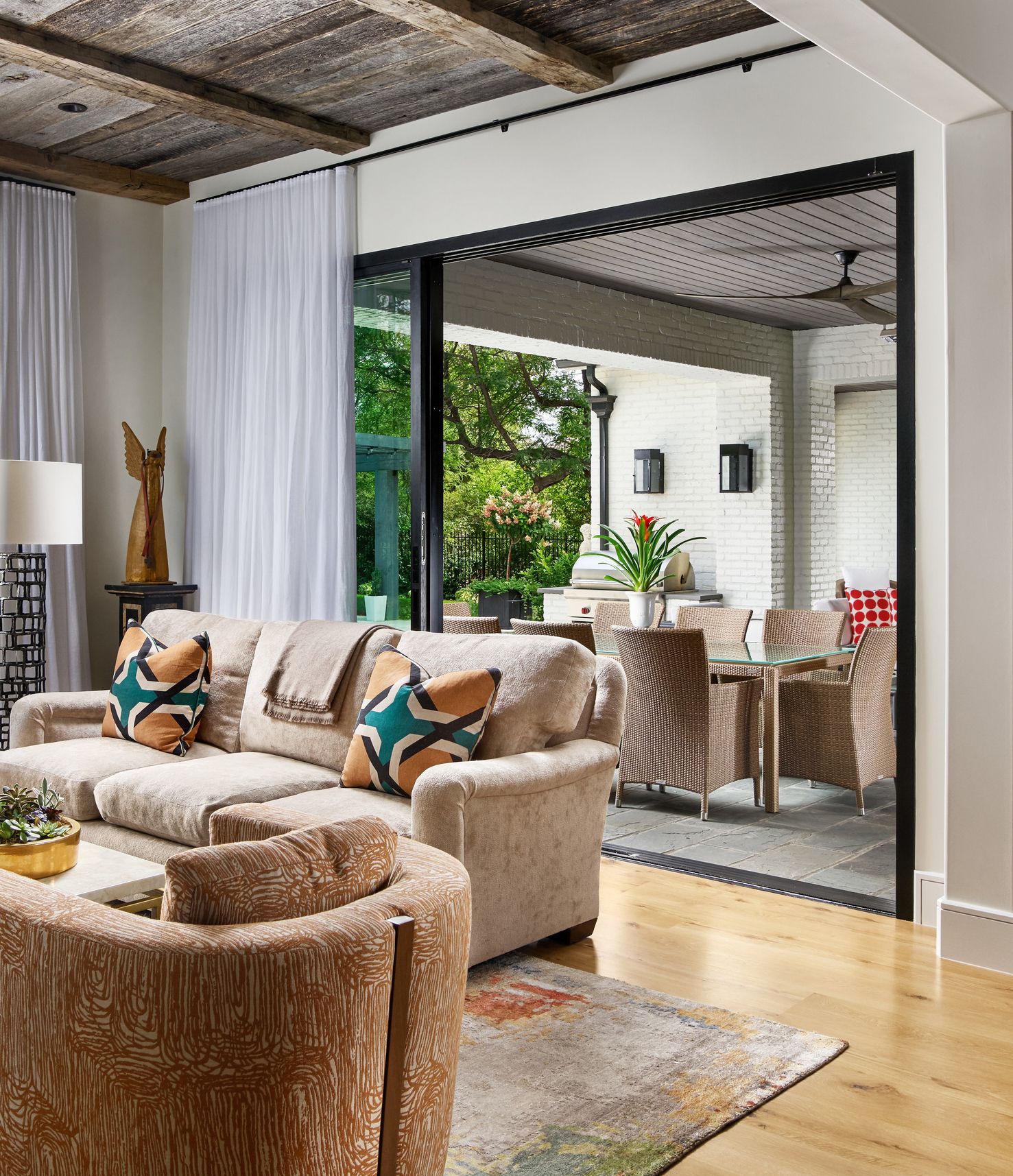
Are Multi-Panel Doors Right for You?
While these door systems blur the line between indoors and out, there are pluses and minuses to consider
PROS
MORE LIGHT: With expanses of glass, multi-panels flood a home with natural light. Open or closed, they also create a strong connection to the outdoors, which can alleviate stress and promote better health.
MORE AIR: In tightly built, energy-efficient homes, these doors can combat stuffiness, ushering in fresh air. When the weather is mild, they provide natural ventilation, welcoming in cool breezes.
MORE USABLE SPACE: In nice weather, they create a seamless transition between indoor living spaces and patios, decks, or garden rooms. This expanded usable space adds value to a home, which can provide a return on some, if not all, of the cost.
CAN SUIT ANY STYLE: In natural wood or painted finishes, and with traditional or industrial-style grille patterns, as well as glass and hardware options that rival patio or French door offerings, multi-panels can look at home in a wide range of house styles.
CONS
EXPENSIVE: Ponying up for the product is just the start. If you’re renovating, you’ll pay for demoing the wall and reengineering it, plus installation. Your pro has to nail the details—or the doors may not work properly. You might pay $40,000 for a retrofitted system of 15-by-7½-foot folding aluminum-clad wood doors.
PRIVACY: That stunning view works both ways. If neighbors are close by, you’ll have to be okay with the exposure, or invest in shades to provide privacy at night, which can add about $2,000 to $3,500 to the bottom line.
INSECTS: In areas with mosquitoes and other flying pests, you’ll need a screen system if you want to fling the doors open all summer. Most manufacturers offer these for an added cost, about the same as privacy shades.
UPKEEP: You’ll have to keep an eye out for fingerprints and vacuum the tracks frequently to remove debris before it builds up, causing friction. These heavy doors won’t glide well over dirty tracks.
Types of Multi-Panel Door Systems
They all deliver big views, but all multi-panels don’t work the same way. Here are your options.
Picking Materials for Multi-Panel Doors
As with patio sliders, a number of options are available. Here, the most common choices.
Wood
Cost: $$$$-$$$$$
Wood is warm, rich, and can be finished with a clear coat, stain, or paint. With a high thermal rating that improves energy efficiency, wood species range from oak and pine to mahogany. The warranty on finishes can last up to 20 years.
Aluminum
Cost: $$$$-$$$$$
Strong enough to have stiles and rails narrower than ones of wood, aluminum maximizes the amount of glass used. Factory finishes resist weathering for up to 20 years. But with low thermal resistance, aluminum doors often fail to meet energy codes in colder regions.
Aluminum-clad wood
Cost: $$$$-$$$$$
With wood inside and weather-resistant aluminum outside, the clad option reduces maintenance while echoing interior wood trim. As with aluminum frames, the paint warranty here is up to 20 years.
Vinyl
Cost: $$$-$$$$
Less common, vinyl doors help to cut costs while minimizing maintenance. The colors are limited to white, tan, or bronze, but they can carry finish warranties of up to 25 years, or as long as you occupy the house.
Glass for Your Multi-Panel Door System
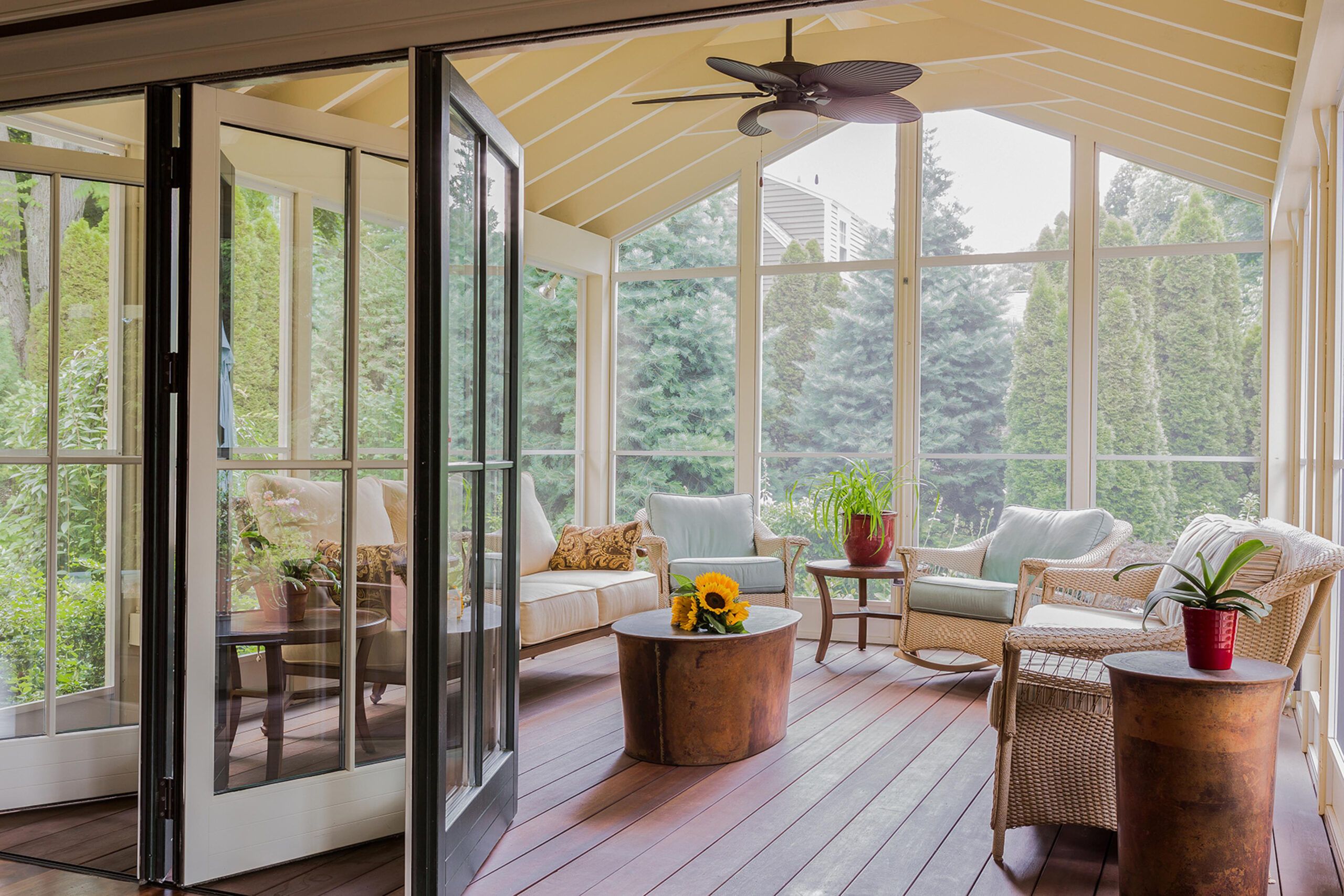
The star of multi-panels—the glazing—is always insulated, with a low-e coating. From there, you have a few upgrades to think about.
IMPACT RESISTANCE
Replacing a shattered panel on a multi-panel door will cost thousands, plus take weeks for the custom order. Impact-resistant glass, often reinforced with a clear plastic laminate sandwiched between two panes, might be mandated by code if you live in a high-wind area. But it could also make sense for families with young kids.
Cost: about 40 to 60 percent more than standard glass
TRIPLE PANES
An extra layer of glass and insulating gas makes door panels about 15 to 20 percent more energy efficient. The extra glazing reduces noise significantly, too, a boon where there’s an airport, highway, or hard-partying household nearby.
Cost: about 30 to 50 percent more than dual panes
ENVIRONMENTAL
This bird-safe glass contains an ultraviolet pattern that makes it easier for wildlife to see, so they can avoid crashing into it.
Cost: about 60 percent more
PRIVACY
While multi-panels are all about maximizing views, there are times when you want to limit visibility, including interior applications where the doors serve as an occasional room divider. Typically, manufacturers offer as many decorative glass options for multi-panels as they do for patio doors—tinted, etched, and with patterns that offer various levels of obscurity.
Cost: about 20 percent more
GRILLES
While most people opt for large, uninterrupted expanses of glass, a variety of grille options—from Colonial-style grids to Craftsman-inspired triple-pane details—help multi-panel doors fit in with traditional architecture. Grilles that simulate divided lights are applied to the inside, outside, or both, and are usually removable for cleaning. Integrated grilles sandwiched between the glass panes are the least authentic-looking option.
Cost: about 15 to 20 percent on top of the cost of glazing
Selecting the Sill for Your System
Depending on the door system, there are sills that impact looks, performance, and accessibility. Here are some common options.

Performance / On-floor drainage: Also known as surface-mounted, this sill sits 1½ to 2½ inches above the finished floor, acting as a curb to keep rain and snow from entering. Drainage channels outside (on the left) direct water away from the house; wood trim matches interior finishes. The trade-off is accessibility: It may present a trip hazard to young children or those with mobility issues.
Integrated / Flush: This sill—essentially a U-shaped track—projects 3⁄16 inch above the floor, or about as high as three nickels stacked. That alleviates accessibility concerns and delivers a clean line. But the sill won’t keep out wind or water, so it’s limited to interior applications, exteriors in warm, dry climates, or where the doorway is well protected by a deep overhang outside.
Hybrid / On-floor low-threshold: Many manufacturers offer a hybrid option that combines elements of performance and integrated sills. These project above the floor about ¾ inch, with textured aluminum ramps on both sides of the track to improve accessibility. But hybrid sills aren’t rated against water, making them practical only in mild climates without driving rain.
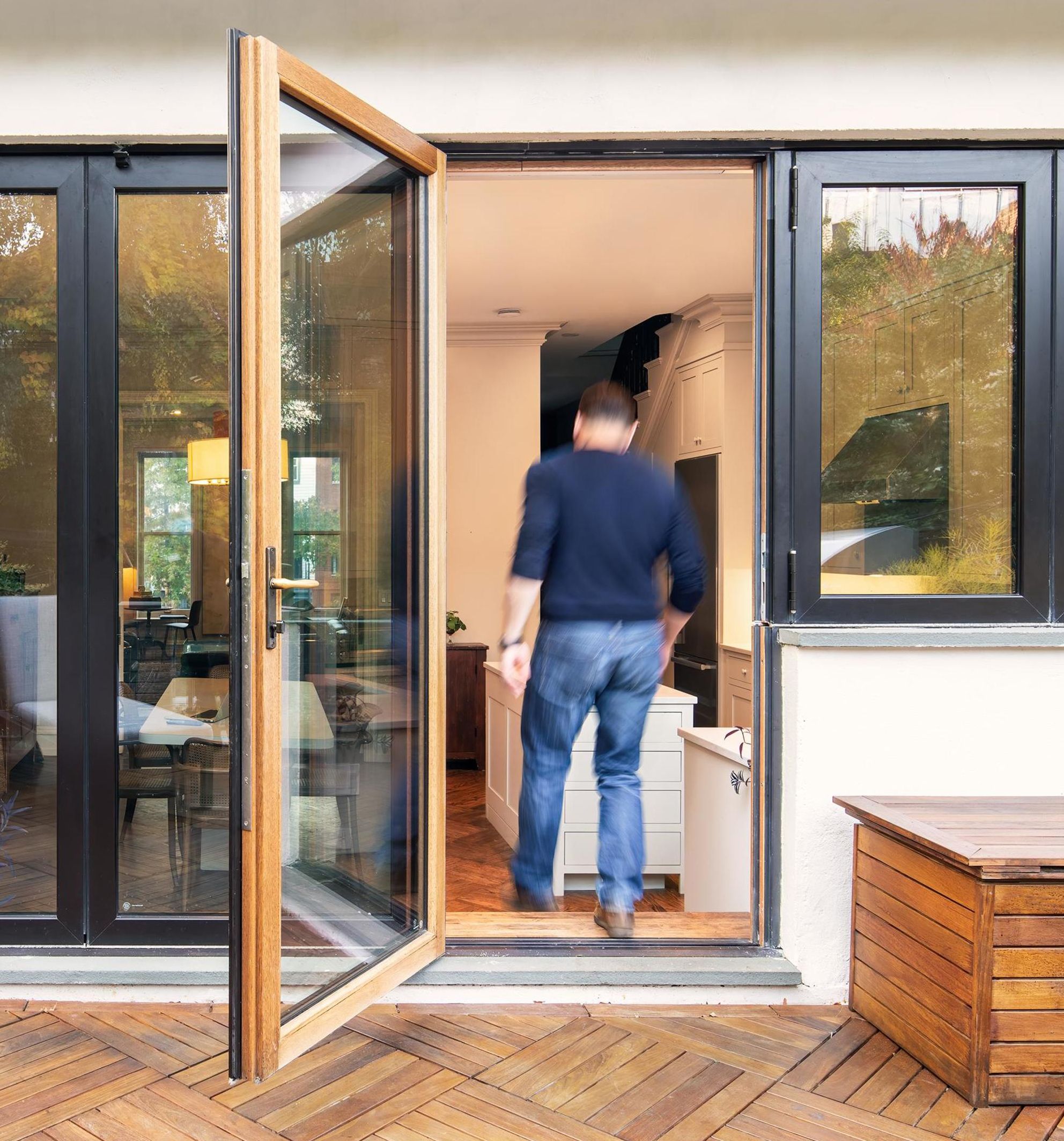
Adding Access Doors
Need to take the trash out? You can usually add a swinging door to a folding system. With multi-slide and pivot doors, you move one panel to get outside. Size is also a factor. “If you have large 5-by-10-foot panels, a swinging daily door can be a little easier to operate than a slider, especially if you’re balancing a tray of burgers in one hand,” says Andersen Windows’ Brian Quick.
Sizing for Your System
Built to order in ⅛-inch increments, multi-panels are custom-made to fit just about any opening up to the maximum dimensions shown here. Configurations are plentiful, too, with choices in the number of panels, the direction of the opening, and the location of the access door. Here’s a breakdown of multi-panel door options, by system.
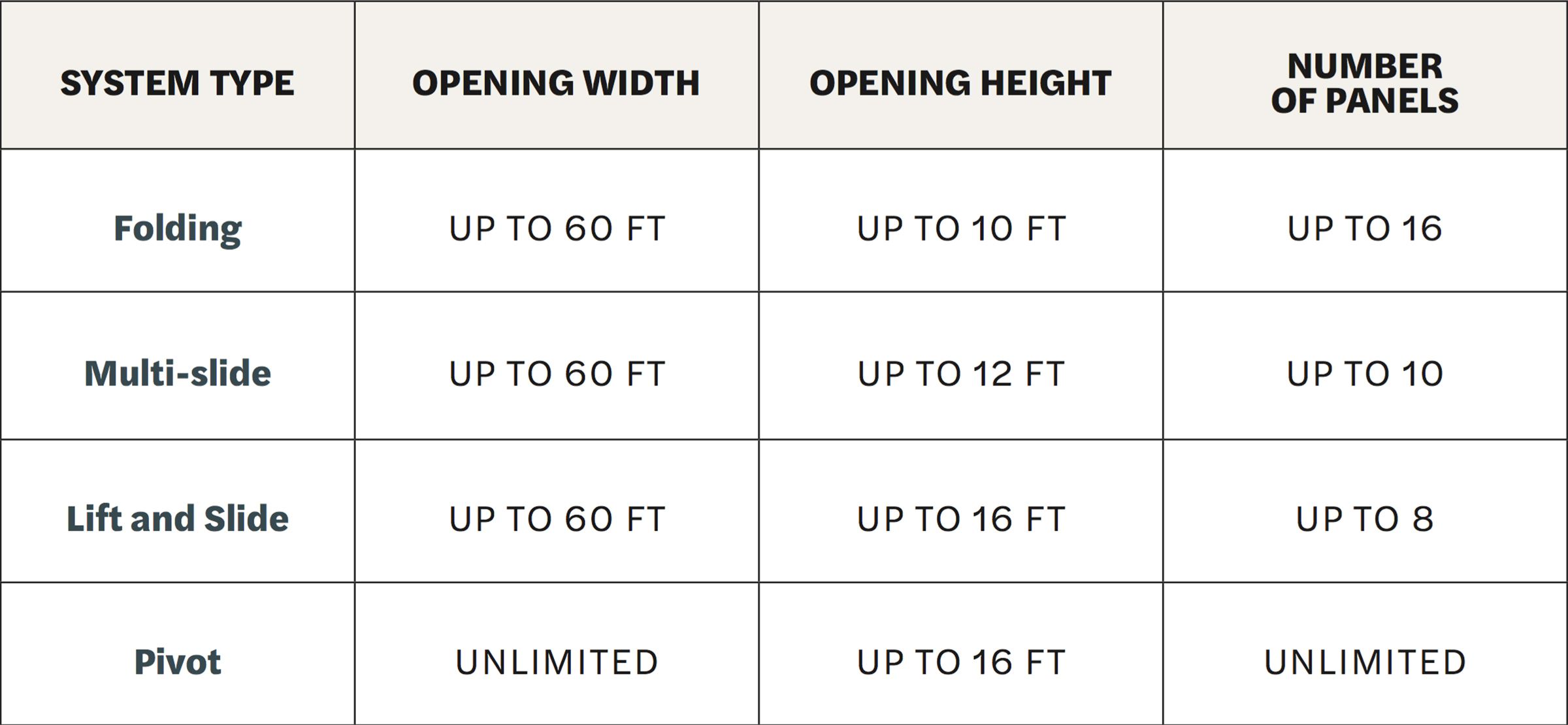
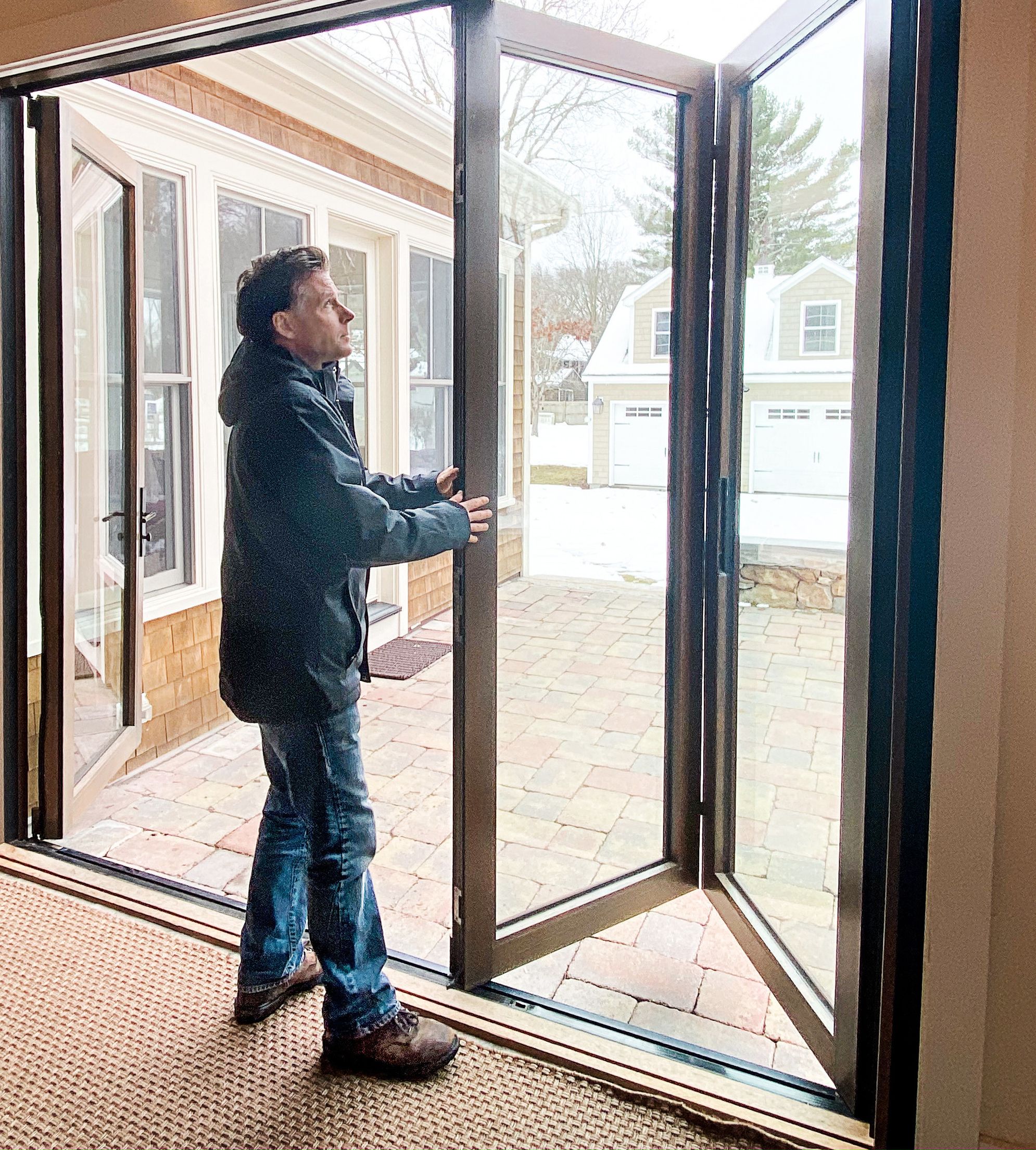
Don’t Skimp on Installation
Multi-panel doors have to perform like solid walls, so they require more structural support than other openings. Besides working with an experienced installer, that usually means involving a structural engineer, who will provide the necessary load calculations. The header, for instance, can’t deflect more than 1⁄16 inch when carrying the weight of the door, or the entire system will start to rack. And the opening has to be level and square from the beginning to ensure proper door operation and to prevent water and air infiltration between the panels.
To find an experienced pro, start with the dealer, or ask if the manufacturer has a certification program. Call potential contractors’ references to see how the multi-panel doors they’ve installed are holding up.
TOH Pro Tip
“Don’t leave anything to chance with the opening for these door systems, because if the structure sags even a little, the panels won’t work well. If a 2×10 LVL is called for, I’ll push for a 2×12. It’s worth it, knowing the header won’t move a hair for the next 100 years.” —Charlie Silva, Home Builder
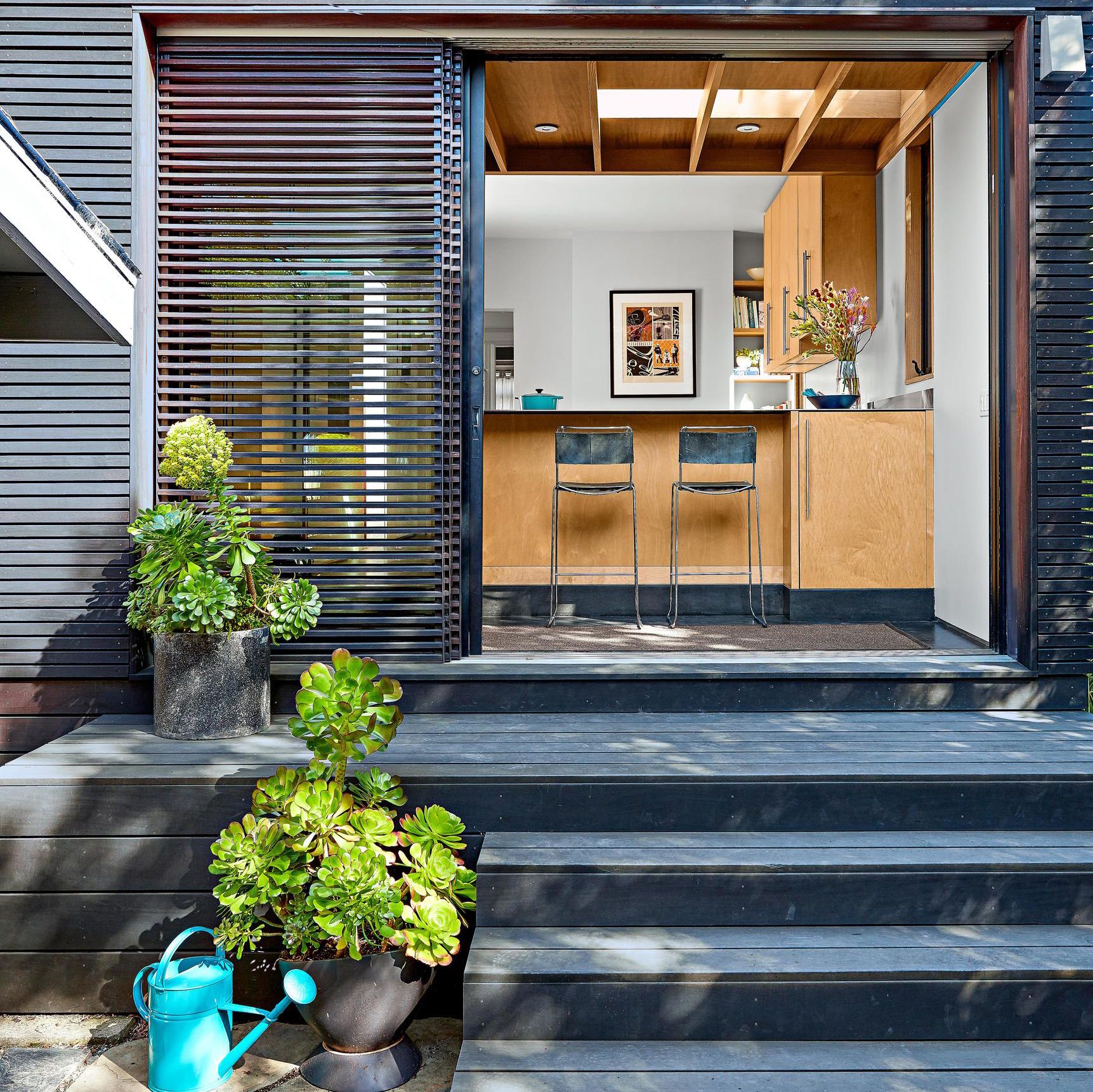
Game-Changing Upgrades
These door systems provide views and create a hybrid indoor-outdoor space, but certain add-ons may help you get the most out of your investment. Here are three that can be worth paying for.
INSECT SCREENS
If mosquitoes bug you in summer, screens are key. Door manufacturers offer manually operated or automated retractable screens that ride in a dedicated track within the sill, requiring more wall depth. These move horizontally, although pull-down versions are possible, too. Specialty screen-makers offer denser mesh weaves that will also block solar heat and provide some privacy. Prices start at about $2,000 for a 10-by-7-foot basic screen system.
WINDOW SHADES
Blackout shades are essential for evening privacy. They also protect floors, furniture, and fabric from fading. Sheer solar shades preserve exterior views while filtering out harsh UV rays. Mounted inside and pulled down, shades tend to interfere with folding doors that open inward. Some manufacturers offer the option of a pleated shade mounted over the glass panes for a clean look. Prices start at about $2,000 for a 10-by-7-foot system.
AUTOMATION
While part of the genius of these doors is their easy operation, some homeowners can still find it difficult to move multiple heavy panels. Adding automation lets you control the system with a wall switch or smartphone app. The feature is most common on multi-sliders, since they are the heaviest to move. Some systems offer battery backup to work in a power outage. A typical install can add as much as $7,500 to the cost of the system.
